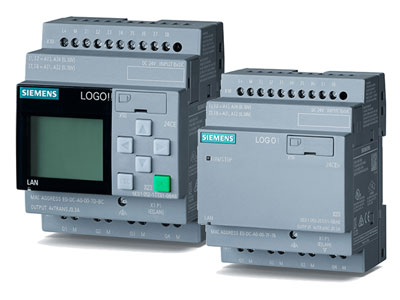Key Takeaway
Deciding between a PLC and an Embedded System depends on your needs. PLCs (Programmable Logic Controllers) are ideal for industrial environments. They are robust, reliable, and designed for real-time control of machinery and processes. PLCs are user-friendly and easily programmable, making them perfect for factory automation.
Embedded systems, however, are more versatile and can be tailored for a wide range of applications beyond industrial settings. They are customizable and can be optimized for specific tasks, offering more flexibility.
If you need a reliable, easy-to-use solution for industrial automation, choose a PLC. For more specialized, adaptable tasks, an embedded system might be the better choice. Consider your specific requirements before deciding.
Definition and Overview of PLC and Embedded Systems
Programmable Logic Controllers (PLCs) are specialized computing devices used primarily in industrial automation. They are robust, designed to withstand harsh environments, and capable of handling complex control tasks with high reliability. PLCs are programmed using ladder logic or function block diagrams, making them accessible for engineers familiar with these languages.
Embedded systems, on the other hand, are dedicated computer systems designed to perform specific tasks within larger systems. They are found in a wide range of applications, from consumer electronics to automotive systems. Unlike PLCs, embedded systems can be highly customized, offering flexibility in both hardware and software configurations.
Understanding the fundamental differences between PLCs and embedded systems is crucial for making informed decisions in industrial applications. Both have unique features and serve distinct purposes, but their core functionalities often overlap, leading to confusion when choosing the right solution.

Key Differences Between PLC and Embedded Systems
One of the primary differences between PLCs and embedded systems is their application focus. PLCs are optimized for industrial control applications, where reliability and ease of programming are paramount. They are designed to handle multiple input/output signals, making them ideal for controlling machinery, production lines, and other industrial processes.
Embedded systems, however, are used in a broader range of applications. They can be found in household appliances, medical devices, and even spacecraft. Their versatility lies in their ability to be tailored for specific tasks, providing optimized performance for those applications. This customization makes embedded systems highly efficient but also more complex to design and program.
Another key difference is in their programming and development environments. PLCs use standardized programming languages and interfaces, which simplify the development process for industrial applications. Embedded systems, conversely, require more specialized knowledge of hardware and software integration, often using languages like C or C++ and real-time operating systems (RTOS).
You May Like to Read
Applications of PLC vs. Embedded Systems
PLCs are predominantly used in industrial automation. They control assembly lines, manage power distribution systems, and automate tasks in manufacturing environments. Their robustness and ease of maintenance make them the preferred choice in these settings. For instance, a PLC might control the conveyor belts in a factory, ensuring synchronized movement of materials with precision and reliability.
Embedded systems, meanwhile, are ubiquitous in everyday life. They are integral to the functioning of smartphones, home appliances, and automotive control systems. For example, the anti-lock braking system (ABS) in a car is managed by an embedded system, ensuring safe and efficient braking by processing data from various sensors in real-time.
The choice between PLCs and embedded systems often depends on the specific requirements of the application. In environments where reliability and standardization are critical, PLCs are typically favored. In contrast, applications requiring high customization and integration with other technologies are better served by embedded systems.
Advantages and Disadvantages of Each
PLCs offer several advantages, including high reliability, ease of programming, and robustness in industrial environments. They are designed for longevity and can operate in conditions that would be challenging for general-purpose computers. However, their specialized nature can also be a limitation, as they may lack the flexibility and computational power of more general embedded systems.
Embedded systems provide unparalleled flexibility and performance. They can be tailored to meet specific needs, offering optimized solutions for a wide range of applications. This customization, however, comes with increased complexity in design and development. The need for specialized knowledge and tools can make embedded systems more challenging to implement and maintain.
While PLCs excel in standardized industrial environments, embedded systems thrive in applications requiring bespoke solutions. The choice between the two often hinges on factors like the complexity of the task, the need for customization, and the operational environment.
Case Studies and Examples
Consider an automotive assembly line controlled by PLCs. The PLCs manage robotic arms, conveyor belts, and various sensors, ensuring precise coordination and high reliability. This setup minimizes downtime and maximizes efficiency, demonstrating the strengths of PLCs in industrial automation.
In contrast, an embedded system in a modern smartphone integrates multiple functions such as processing, communication, and multimedia. The system is designed to handle a variety of tasks efficiently, from managing battery life to providing a smooth user interface. This example highlights the versatility and complexity of embedded systems.
Both PLCs and embedded systems have their place in modern technology. Their effectiveness depends on the application context and specific requirements of the task at hand. By examining real-world examples, we can better appreciate the strengths and limitations of each system.
Conclusion
When deciding between PLCs and embedded systems, it’s essential to consider the specific needs of your application. PLCs are ideal for industrial environments requiring robust, reliable, and easily maintainable control systems. They excel in scenarios where standardized programming and high reliability are crucial.
Embedded systems, with their flexibility and high performance, are better suited for applications requiring customized solutions and integration with other technologies. They offer tailored performance but come with increased complexity in design and development.
Ultimately, the choice depends on the unique requirements of your project. Understanding the strengths and limitations of both PLCs and embedded systems will help you make an informed decision, ensuring the best fit for your industrial application.
